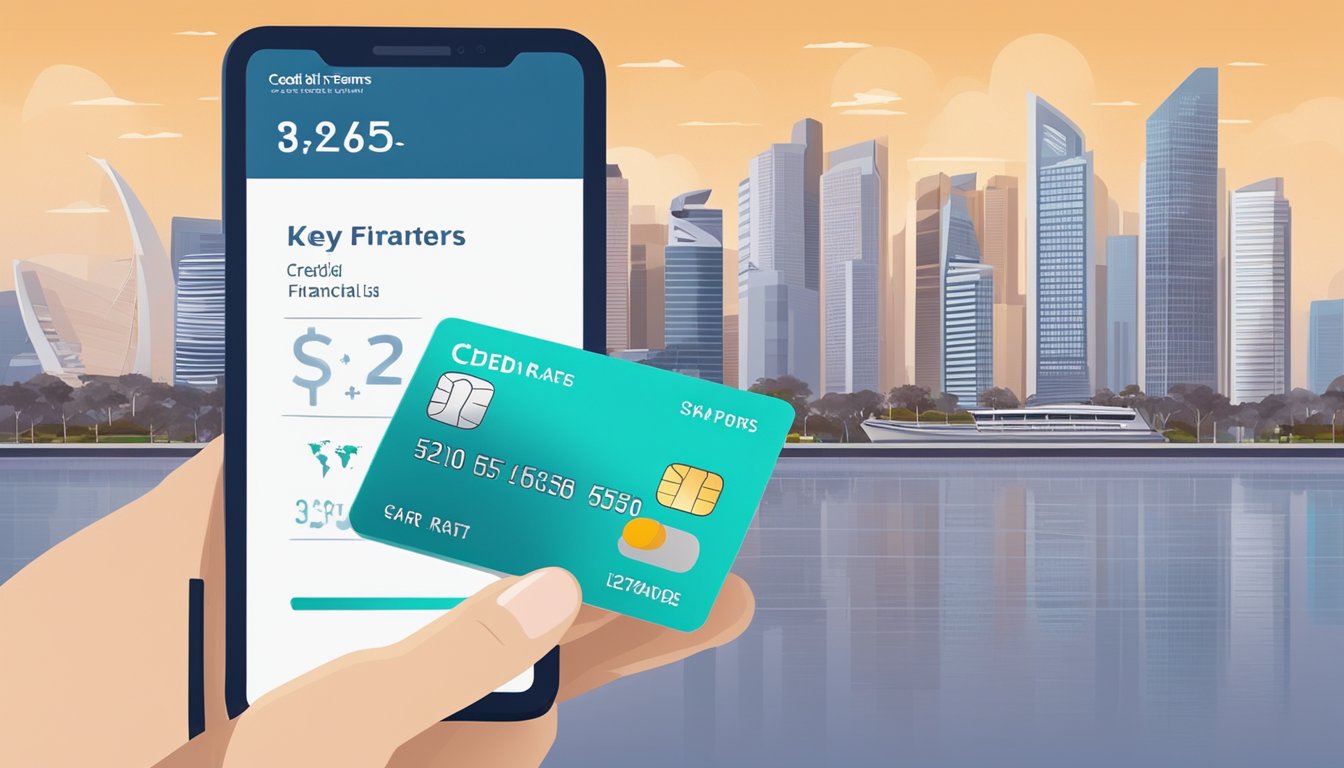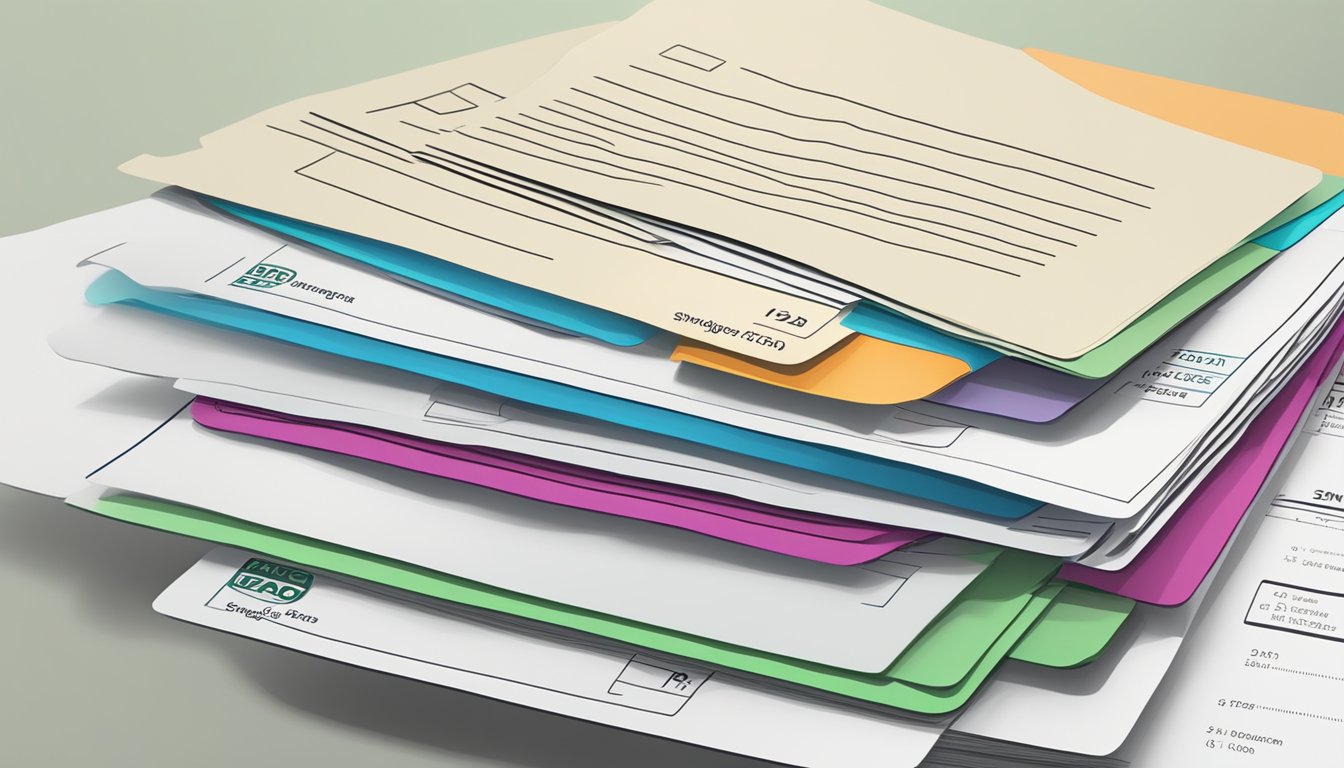If you’re looking for a flexible way to borrow money in Singapore, a credit line might be the right option for you. A credit line is a type of loan that allows you to borrow up to a certain amount of money, known as your credit limit, whenever you need it. You can borrow as much or as little as you need, up to your credit limit, and you only pay interest on the amount you borrow.

Understanding credit lines in Singapore can be confusing, but it’s important to know the basics. Credit lines are typically unsecured loans, which means you don’t need to provide collateral to secure the loan. Instead, the lender will assess your creditworthiness based on factors such as your income, credit history, and employment status. The interest rates on credit lines can vary depending on the lender and your creditworthiness, but they are generally lower than credit card interest rates.
Key Takeaways:
- Credit lines are a flexible way to borrow money in Singapore, allowing you to borrow up to your credit limit whenever you need it.
- Credit lines are typically unsecured loans, and interest rates can vary depending on the lender and your creditworthiness.
- To manage your credit line effectively, it’s important to understand key financial terms and rates, as well as the eligibility and application process.
Understanding Credit Lines in Singapore

If you’re looking for a flexible and convenient way to borrow money in Singapore, a credit line may be the perfect solution for you. Here, we’ll explain what a credit line is and how it compares to personal loans.
What Is a Credit Line?
A credit line, also known as a personal line of credit, is a type of loan that allows you to borrow money up to a predetermined credit limit. Unlike a personal loan, which gives you a lump sum of money that you repay over a fixed period, a credit line is more flexible. You can borrow money as you need it, up to your credit limit, and you only pay interest on the amount you borrow.
Credit lines are typically unsecured, which means you don’t need to provide collateral to secure the loan. However, you will need to have a good credit score to qualify for a credit line.
Comparing Credit Lines and Personal Loans
When deciding between a credit line and a personal loan, there are a few key differences to consider. Firstly, credit lines are more flexible than personal loans. With a credit line, you can borrow money as you need it, up to your credit limit. With a personal loan, you receive a lump sum of money, which you then repay over a fixed period.
Secondly, credit lines usually have higher interest rates than personal loans. This is because they are more flexible and offer more convenience. However, if you only need to borrow a small amount of money, a credit line may be more cost-effective than a personal loan.
In conclusion, credit lines can be a great way to borrow money in Singapore. They offer flexibility and convenience, and can be a good option if you need to borrow money on an ongoing basis. However, it’s important to compare different credit lines and personal loans to find the best option for your needs and budget.
Eligibility and Application Process

To apply for a credit line in Singapore, you need to meet certain eligibility criteria and follow the application process. Here are the essential details you need to know.
Eligibility Criteria for Singaporeans and PRs
If you are a Singaporean or Permanent Resident, you must be at least 21 years old and have a minimum annual income of $30,000 to be eligible for a credit line. Lenders may also require you to have a good credit score and credit history. You will need to provide your NRIC or FIN number, and your employment details.
Application Essentials for Foreigners
If you are a foreigner, you must have a valid passport and employment pass to apply for a credit line in Singapore. You must also be at least 21 years old and have a minimum annual income of $40,000. Lenders may also require you to have a good credit score and credit history. You will need to provide your passport and employment pass details, and your employment and income details.
How to Apply for a Credit Line
To apply for a credit line in Singapore, you can do so online or at a bank branch. You will need to provide your personal and contact details, employment and income details, and any other information required by the lender. Some lenders may require you to provide additional documentation, such as your credit report or income tax statement.
When applying online, you can use MyInfo to pre-fill your application form with your personal information, making the process faster and more convenient. Once you have submitted your application, the lender will review it and inform you of the outcome. If approved, you can start using your credit line immediately.
Overall, applying for a credit line in Singapore is a straightforward process, provided you meet the eligibility criteria and have the necessary documentation.
Key Financial Terms and Rates

Interest Rates and EIR
When it comes to credit lines, interest rates are an essential factor to consider. The interest rate is the amount you will pay on the outstanding balance of your credit line. It is essential to note that interest rates differ from bank to bank, and they are usually subject to change. Therefore, it is crucial to keep an eye on the interest rates of your bank of choice.
Effective Interest Rate (EIR) is the actual interest rate charged by the bank on your credit line. It takes into account all the fees and charges associated with the credit line, such as annual fees and processing fees. Therefore, when comparing credit lines, it is essential to consider the EIR rather than just the interest rate.
Understanding Fees and Charges
Credit lines come with various fees and charges, which can be confusing to understand. Some of the common fees include annual fees, processing fees, late payment fees, and over-limit fees. It is essential to understand these fees before applying for a credit line to avoid any surprises.
Annual fees are charged yearly and can range from $0 to $200. Some banks waive the annual fees for the first year, while others waive them entirely if you meet specific criteria.
Processing fees are charged when you apply for a credit line. They can range from $50 to $200 and are usually non-refundable.
Late payment fees are charged when you fail to make a payment on time. They can range from $60 to $100 and are usually a percentage of the outstanding balance.
Over-limit fees are charged when you exceed your credit limit. They can range from $40 to $80.
Credit Limit Factors
Credit limit is the maximum amount of credit that you can borrow from your credit line. The credit limit is determined by several factors, including your income, credit score, and credit history. Banks usually offer credit limits ranging from $1,000 to $200,000.
Your income plays a crucial role in determining your credit limit. Banks usually require a minimum annual income of $30,000 to $80,000 to qualify for a credit line.
Your credit score and credit history also play a crucial role in determining your credit limit. A good credit score and credit history increase your chances of getting a higher credit limit.
In conclusion, understanding the key financial terms and rates associated with credit lines is essential when choosing the best credit line for you. Always compare the interest rates and EIR of different banks, understand the fees and charges associated with the credit line, and consider the factors that determine your credit limit.
Managing Your Credit Line

If you have a credit line, it’s important to use it responsibly. Here are some tips for effectively managing your credit line in Singapore.
Repayment Strategies
One of the most important aspects of managing your credit line is making sure you have a repayment strategy in place. You should always aim to pay at least the minimum repayment amount by the payment due date. This will help you avoid late payment fees and overlimit fees.
If you have a fixed repayment plan, make sure you stick to it. This will help you avoid interest calculated on the outstanding balance. On the other hand, if you have a flexible repayment plan, you should aim to pay more than the minimum repayment amount whenever possible. This will help you reduce the amount of interest you pay over time.
Maximising Credit Line Benefits
Your credit line can be a great tool for managing your finances. To get the most out of it, make sure you understand all the benefits that come with your credit line. For example, some credit lines offer cashback rewards or other perks for using the credit line regularly.
You should also take advantage of any promotional offers that come with your credit line. For example, some credit lines offer 0% interest for a certain period of time. This can be a great way to save money on interest charges.
Avoiding Common Pitfalls
There are some common pitfalls to avoid when managing your credit line. For example, you should avoid using your credit line to pay for things you can’t afford. This can lead to a cycle of debt that can be difficult to break.
You should also be aware of the payment due date and make sure you pay at least the minimum repayment amount on time. Late payment fees can add up quickly and make it difficult to stay on top of your finances.
In conclusion, managing your credit line in Singapore requires a combination of responsible borrowing, strategic repayment, and taking advantage of the benefits that come with your credit line. By following these tips, you can make the most of your credit line while avoiding common pitfalls.
Promotions and Offers

When it comes to credit lines in Singapore, there are often promotions and offers available that can help you get better terms and save money. In this section, we will explore some of the current bank promotions and how you can leverage them to your advantage.
Current Bank Promotions
One bank that is currently offering a promotion is Maybank. Their Creditable line of credit promotion offers a low interest rate of 4.45% p.a. (EIR 8.33% p.a.) for the first year, and a subsequent rate of 9.88% p.a. (EIR 18.18% p.a.) thereafter. This promotion is available to new and existing Maybank Creditable customers who apply by 31 March 2024.
Another bank offering a promotion is UOB. Their CashPlus line of credit promotion offers a low interest rate of 4.5% p.a. (EIR 8.22% p.a.) for the first year, and a subsequent rate of 9.99% p.a. (EIR 18.5% p.a.) thereafter. This promotion is available to new and existing UOB CashPlus customers who apply by 31 March 2024.
Leveraging Promotions for Better Terms
If you are considering a credit line from a bank that is not currently offering a promotion, it may still be possible to leverage promotions from other banks to get better terms. For example, if you have an existing credit line with OCBC, you may be able to negotiate a better interest rate by mentioning a promotion from another bank, such as Maybank or UOB.
Similarly, if you are considering a credit line from Citibank, you may be able to negotiate a better interest rate by mentioning a promotion from another bank, such as Maybank or UOB. Citibank also offers their own promotion, called Ready Credit, which offers a low interest rate of 3.45% p.a. (EIR 6.50% p.a.) for new and existing customers who convert their available credit limit to a cash loan.
In conclusion, it is important to keep an eye out for promotions and offers when considering a credit line in Singapore. By taking advantage of these promotions, you can potentially save money and get better terms. Remember to always read the terms and conditions carefully and compare different options before making a decision.
Frequently Asked Questions

What are the exciting benefits of having a personal line of credit?
A personal line of credit is a flexible way to borrow money that allows you to access funds as and when you need them. With a line of credit, you can enjoy the freedom to use the money for any purpose you like, be it for home renovations, a vacation, or even to cover unexpected expenses. The best part is that you only pay interest on the amount you borrow, making it a cost-effective way to manage your finances.
How can one secure the best interest rates for a line of credit?
To secure the best interest rates for a line of credit, you should shop around and compare the rates offered by different banks. Look for banks that offer competitive interest rates and flexible repayment terms. You can also consider adding collateral to your loan to secure a lower interest rate. Additionally, having a good credit score can help you secure better interest rates.
Which banks offer the most competitive lines of credit in the market?
Several banks in Singapore offer lines of credit, including DBS, HSBC, and OCBC. Each bank has its own set of terms and conditions, so it’s important to compare the rates and features of each before making a decision.
What steps should I take to apply for a personal line of credit?
To apply for a personal line of credit, you will need to provide proof of income, employment, and identity. You will also need to fill out an application form and provide any additional documentation required by the bank. Once your application is approved, you will be given a credit limit, which you can use as and when you need it.
Can you compare the advantages of a line of credit versus a traditional loan?
A line of credit offers greater flexibility than a traditional loan, as you can borrow money as and when you need it, rather than taking out a lump sum. Additionally, you only pay interest on the amount you borrow, making it a cost-effective way to manage your finances. However, traditional loans may offer lower interest rates and fixed repayment terms, which can be beneficial for those who prefer a structured repayment plan.
What methods are available for repaying a line of credit efficiently?
To repay a line of credit efficiently, you should make sure to pay off any outstanding balances as soon as possible. You can also consider making larger payments or paying more frequently to reduce the amount of interest you pay over time. Additionally, setting up automatic payments can help ensure that you never miss a payment and can help you stay on top of your finances.




